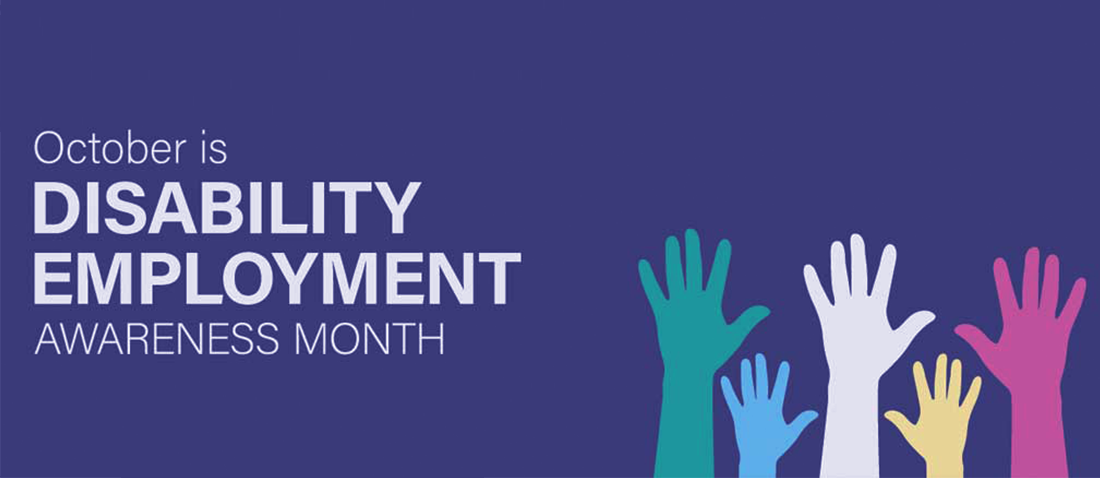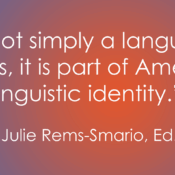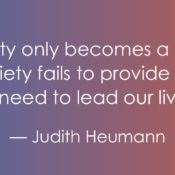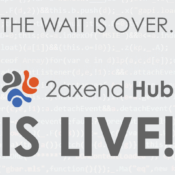
From NDEAM to ROI: The Business Case for Psychological Safety
This month, as we recognize National Disability Employment Awareness Month (NDEAM), it's time for a conversation that goes beyond commemoration—it's about something personal: the profound satisfaction of belonging.
If you're a business leader, you've seen the data. The kind of compelling statistics that were front and center this past July at the Disability:IN Global Conference in Orlando, FL: Inclusive work environments see 50% lower turnover, a 55% improvement in job performance, and 75% fewer sick days.
But let's be honest—those aren't just feel-good numbers. They're dramatic performance jumps that demand an explanation. The secret isn't a complex corporate strategy; it's basic psychology. When you create an environment where everyone—truly everyone—can bring their authentic selves to work, you aren't just being nice. You are fulfilling core human needs, and in doing so, you are unlocking a profound level of engagement that drives superior performance.
It Starts with Feeling Safe, Not Just Tolerated
Think for a moment about the best team you’ve ever been on. You likely felt a profound sense of psychological safety—a deep, unwavering comfort that drove your success.
In a truly inclusive workplace, that feeling isn't the exception; it's the standard. Employees aren't forced to waste precious mental energy worrying about being judged for their disability, their background, or their identity. They aren't ‘code-switching’ or constantly on guard, forced to edit who they are, nor are they burdened with the exhausting work of self-advocacy to access accommodations.
Instead, that mental energy is immediately and completely invested in their work.
- The Performance Boost: When people feel safe to speak up, to challenge ideas, and yes, even to make mistakes, they transform into innovative problem-solvers. For individuals with disabilities, this emotional and mental liberation—free from the stress of fighting for access—contributes to this remarkable 55% jump in job performance. It's the dividend of freedom.
- The Retention Factor: We are all fundamentally driven to stay where we are valued. When employees know their whole, authentic self is accepted, their loyalty skyrockets. This is why you see the dramatic 50% drop in turnover—people simply don't leave a true community.
Less Stress, More Well-Being
Stress is a silent killer of productivity.
When an environment feels hostile or unsupportive, it leads to chronic anxiety, presenteeism, and ultimately, burnout. More specific to the disability community is the often heavy, exhausting cost incurred when being forced to navigate systemic, physical, and attitudinal barriers—an invisible burden known as the Disability Tax (which includes the Deaf, DeafBlind and Hard of Hearing Tax for those in that community).
An inclusive culture acts as a shield against that stress. By establishing equitable practices and policies, you send a clear message: "We support your life, not just your labor."
- Accessibility is Proactive: Stop requiring employees to advocate for their basic needs. Simple actions, like flexible scheduling or proactively providing necessary accommodations, demonstrate profound respect for an employee’s needs before they even have to ask. By addressing barriers from the get-go, you eliminate the emotional, time, and financial burden—the core of the Disability Tax—and allow individuals to manage responsibilities effectively.
- The Health Result: When you eliminate this constant emotional burden and the need for continuous self-advocacy, you directly improve well-being. That means less stress-related illness, better mental health, and a massive reduction in absenteeism. This is the root cause of those 75% fewer sick days—it's the massive ROI of eliminating the emotional tax on your workforce.
Shifting from Compliance to Culture
The compelling statistics are clear, but the immediate question remains: How do we actually achieve that level of psychological safety?
Creating a truly inclusive environment isn't a one-time project; it's a fundamental shift in company culture and policy. It demands that leadership move beyond good intentions and implement four tangible, strategic actions:
- Lead Inclusion from the Top: Inclusion must be a core business mandate, not just an HR function. Leaders must visibly and consistently champion disability inclusion—not only during NDEAM, but year-round. This commitment requires holding managers accountable for inclusion metrics that drive true belonging, moving past mere legal compliance.
- Invest in Proactive Accessibility: Go beyond minimum legal requirements. When you proactively remove barriers, you signal the strongest message of belonging. This means investing in robust digital accessibility and adopting universal design principles for all physical workspaces and tools. This proactive approach eliminates the emotional, time, and financial burden—the core of the Disability Tax—by stopping the need for employees to constantly advocate for their basic needs.
- Mandate Inclusive Training: Shift the burden of education away from employees with disabilities. Implement ongoing, mandatory training that builds awareness, sensitivity and empathy among all staff. This training should focus on unconscious bias, disability etiquette, and how to recognize and correct microaggressions.
- Empower Employee Resource Groups (ERGs): Properly fund and empower Disability-focused ERGs. These groups are vital hubs for support, mentorship, and connection. Crucially, they provide leadership with critical, lived-experience insight into policy and culture gaps that data alone can't reveal.
The rewards are the undeniable ROI of this commitment. Inclusion is not just the right thing to do; it’s the strategic imperative that cultivates deep, emotional engagement and builds a smarter, more resilient team for the future of work.
This NDEAM, let's remember that the competitive advantage of inclusion isn't just about good PR—it’s about intentionally building a place where everyone can genuinely thrive. And when your people thrive, your organization will too.
What is the one thing your company is doing today to ensure every single employee feels like they truly belong?



